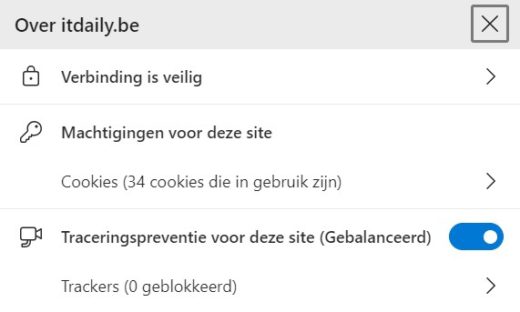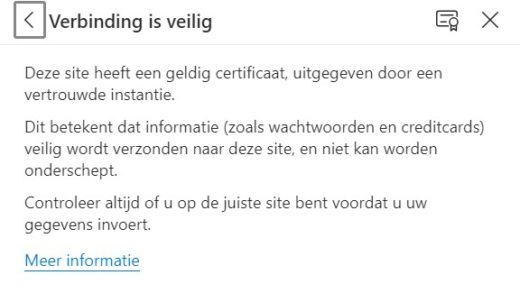This is how you recognize fraudulent websites
- June 27, 2023
- 0
Different Forms of online fraud are a real plague. While most people pay attention when browsing the World Wide Web in any form, sometimes it’s difficult. We give
Different Forms of online fraud are a real plague. While most people pay attention when browsing the World Wide Web in any form, sometimes it’s difficult. We give


Different Forms of online fraud are a real plague. While most people pay attention when browsing the World Wide Web in any form, sometimes it’s difficult. We give you some tips on how to recognize and avoid fraudulent websites.
You’ve been bombarded with it lately: phishing, ransomware, hacking, etc. It seems like the entire internet is riddled with computer-generated pitfalls that will cost you dearly if you’re not careful. However, like many other doomsday messages, it’s not that bad online. But of course it never hurts to be alert and prepared. We’ve put together some tips on how to protect yourself against cyber pirates who are after the contents of your digital treasure chest.
As long as inventions are made, there will be villains who want to take unfair advantage of them. So, cybercrime has been around for about as long as the internet itself. However, it seems that digital fraud has only really picked up steam in the last three years. With half the planet having to stay indoors and being encouraged to do as much as possible online, it was indeed an ideal time to try and trap unwary surfers.
This is a personal problem, but thanks to hybrid work, it is also a professional one. A good family man telecommuting on the same device he is caught on by a fraudulent website can cause a lot of headaches for the company. Luckily, there are also a number of things to look out for and do. We list them for you.
It seems like an odd tip, you know where you surf don’t you? However, anyone who owns a smartphone knows that a typo can easily happen, and cyber criminals are well aware of it. In today’s hectic world things go faster belfuis.be or microsfot.com than you think This tactic is known as Typing error. For example, a variation on this theme is an “alternative spelling” that is visually similar arnazon.com. You’d be surprised how many surfers in a hurry don’t realize that the “m” is actually made up of an “r” and an “n” until it’s too late.
Google will replace the lock icon with something new later this year. However, this does not mean that you can no longer verify that a website is secure to a certain extent. This block means a site is encrypted with HTTPS, which is a pretty positive sign in the URL anyway.

By clicking on the lock symbol again and then on “Connection is secure” you can see whether the site has a valid certificate.


If you continue clicking on the icon at the top right, you will see all the information about this certificate (which website obtained it, which authority issued it, …). This is all good advice, but be careful if you still don’t trust a website. Criminals also know that a decent, encrypted website inspires more trust.
Although fraudulent websites look better and criminals put a lot more work into them than before, content is often still a good indicator. Web shops can no longer do without a reasonable exchange policy and that the data protection regulations must be completely in order, that is undisputed. If you find yourself on a website where these things are just poorly written, then that could well be the signs on the wall.
If you can’t find anything about this at all, that’s an alarm signal. Even if it’s not a scam site, you shouldn’t trust a webshop without a crystal clear exchange policy that betrays your privacy. For example, ITdaily’s privacy policy is displayed in detail on the website.
Many scams are organized from abroad. Worldwide, Dutch is neither the most widespread nor the easiest language. Are you on a website that is clearly populated using Google Translate? Then that’s probably the case and there’s a good chance it was built by someone in a back room in a green book country and with no knowledge of Dutch. Watch out for bad spelling, grammar, and most importantly, poor sentence structure. A noticeably high error rate in the latter is usually a good indicator. The above also applies to the much more popular English. Of course without the Green Booklet.
A website with correct Dutch is not necessarily secure. With targeted campaigns, criminals put a lot more work into their websites, and sometimes they look absolutely perfect. This may be the case, for example, when a party tries to persuade you to link a new account number to a supplier’s account. Larger campaigns simulating websites sometimes look good today. Bad language is therefore an alarm signal, good language is not safe behavior.
In the past, an amateur looking website was often the mark of the wall, but those days are almost entirely behind us. Criminals are learning too, and fraudulent sites like this are now the exception rather than the rule.
Copies of existing websites, or “spoof sites,” are getting better and better, and sometimes almost indistinguishable from the original. In addition, there are tools that will help create such a beautiful phishing site based on the original. Therefore, special caution is required!
After the above, there are a few quick things to look out for as well, which may be a hint that you’re not in the right place.
And last but not least, one that lasts forever, even offline: if it seems too good to be true, it usually is. You won’t win an expensive fridge by sharing a lot of personal information with a website that’s little more than an upgraded spreadsheet.
Source: IT Daily
As an experienced journalist and author, Mary has been reporting on the latest news and trends for over 5 years. With a passion for uncovering the stories behind the headlines, Mary has earned a reputation as a trusted voice in the world of journalism. Her writing style is insightful, engaging and thought-provoking, as she takes a deep dive into the most pressing issues of our time.